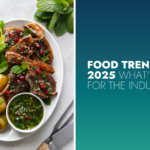In a world that’s changed beyond recognition, what remains the same is our purpose as content marketers—to create and distribute valuable, relevant, and consistent content to attract and acquire a clearly defined audience with the objective of driving positive customer action.
There’s nothing quite like a pandemic to sharpen the minds (and pencils) of companies trying to create content that cuts through the digital clutter. That’s especially true right now, when cutting through could mean the difference between a business sinking or swimming, since digital is one of the only ways to reach your customers.
It was with this urgency in mind that I attended Virtual Content Marketing World 2020 at the end of last year, to see if there were any learns and trends from our colleagues around the world that would be useful in the year ahead.
Three stood out; establishing human connections, prioritising diversity and inclusion, and engaging Gen V.
1. Establishing human connections in a mostly digital world
Digital communications have moved to the forefront over the past 12 months. It was a vital part of the mix before, of course, but COVID catapulted it right to the top of the queue. The difference in digital now is that your content needs to compensate for a lack of face-to-face communications; this is set to continue for some time to come, too.
Because consumers have been bombarded with content—and have consumed so much during various lockdowns—they’ve learnt new behaviours, and have new expectations around the content they consume.
Recent studies show that 59% of consumers feel companies have lost touch with the human element of customer experience. When you consider 47% will spend more with a brand they feel treats them like a human, and 44% will recommend a product purely on emotional criteria, you realise how costly an error losing that human element can be.
So how can you make a connection? Paige O’Neill, CMO of Sitecore had some great ideas to share:
Lead with your heart
People have been surrounded by bad news, and they’re in a completely different mindset than they were 12 months ago. Think about how you can make your content authentic and vulnerable; talk about the challenges your business is having, for example. This will be entirely relatable, and will resonate more at this time. Customers are craving emotion-driven engagement, so get real with them.
Break up the monotony
Be aware of your customers’ realities; they feel like they’re stuck in a perpetual hamster wheel. Why not plan content that helps them take a break from their screens? Consider direct mail or podcasts as a change of pace, or if your events have to be virtual then make them more engaging (turn cameras on, have breakout rooms, add ice-breaker questions, and include a Q&A).
Avoid canned responses
Step away from phrases like, ‘I hope this email finds you well’, ‘new normal’, ‘unprecedented times’.Nobody’s at their best, they hate the new normal, and after a year it’s all starting to feel pretty ‘precedented’—so stop it! Try a different approach with your content, incorporating new topics, new imagery, and new designs. This is a great time to have a go at new things, since everything else around us has changed.
Encourage two-way conversations
The easiest way to understand your audience? Ask them! Ask customers questions; get them to vote; review engagement metrics; see what’s working and do more of it. Give people recommendations based on how they are feeling right now.
Create connected customer experiences
Remember that digital is people’s primary form of communication with your whole company. That means comms need to be connected across teams, and each interaction should ideally be linked to the next.
Lead with empathy and a people-centred approach
You need to really understand where people are at—and respond accordingly. A sterling example of this is An Post’s recent initiative of providing households with free postcards that can be mailed, at no cost, to anywhere in Ireland. My son’s favourite teacher used it as an opportunity to send him (and everyone in his class) a handwritten note at the end of the school year, reminding him of his strengths and wishing him well for the year ahead. He had really missed the classroom environment, and her encouragement, so reaching out in this way meant the world to him. In fact, the postcard is still pinned to our fridge!
2. Prioritising diversity and inclusion
We’ve talked about diversity and inclusion for a long time, but now it’s about taking action. The urgency around this was reflected in Virtual Content Marketing World’s agenda, where 25% of key notes on the main stage centred around this very topic.
According to Stephanie Buscemi, CMO of Salesforce, 52% of consumers say if they don’t see themselves reflected in the brands they are using, they will leave those brands. Your customers are diverse, and so your content—whether it be on social, in ads, on your website or in brochures—should reflect this.
But it’s not just a colour issue, or an age issue, or a gender issue; it’s a people issue. I’m a person, you’re a person, and every customer we want to serve is a person. And that’s why this work matters—it affects us all. Inviting different perspectives to the table and creating inclusive content is simply the right thing to do. So where to start? Sydni Craig-Hart, CEO of Smart Simple Marketing, had these great tips to share:
Invite diverse perspectives to the table
Be deliberate in reaching out and getting to know people in your organisation from diverse backgrounds, or who have different perspectives to offer. Think about how you can connect, expand your network internally and externally, and make sure you’re coming to the conversation with humility. Having an open mind is imperative if you’re looking to learn.
Invest in getting to know your customers
If you’re not talking to your customer base, how can you know how to help them? Get involved, and stay connected, with what’s happening in their lives, so that you can meet them there.
Here’s a challenge for tomorrow; not the day after or next week, but tomorrow. Challenge yourself to speak to three different customers: 1) A raving fan; 2) Someone who recently joined as a customer; and 3) A customer who ditched your services. Listen—and really listen— to what they have to say, then go create some content from a place of empathy.
Let your customers shine
Start collecting customer stories from different voices, and share them—even if they’re not picture-perfect. There’s nobody better to tell your story than your customers; your content shouldn’t always be about you, anyway. It’ll make your content much more approachable, and the more you talk about customers in your content, the easier it’s going to be to attract them. Furthermore, they’ll be far more likely to want to talk to you if you appear open and accessible.
Look at your spend
Take a careful look at how you’re spending your budget, and then diversify. Hire diverse teams, suppliers and freelancers. This is going to bring a different perspective that will allow you to create a varied range of content. But remember, hiring them isn’t enough; you need to actually listen to them!
3. Engaging Gen V
The last 40 years have seen seismic shifts in how we communicate. Devices have become pocket-sized, and the internet’s changed how we work and live. But the biggest change has probably been since the arrival of Gen Y (born between 1981 and 1996), and how much we’ve all come to rely on visual communications.
Each day we’re sharing our daily lives with family, friends and complete strangers by posting photos and videos on social media. We circulate memes and viral clips, spend hours scrolling and watching, and even our texts and emails are sprinkled with emojis. You get the picture—pun intended.
A segment of your target market—more than likely a very large segment—are not just digital natives, but visual natives; those who grew up learning to communicate in a fundamentally different way to their predecessors. In this hyper-digital world, they are the Visual Generation, or Gen V. And if you’re not considering their needs, then you’re missing a key opportunity for success.
Who are Gen V?
Gen V is a term coined by Amy Balliett, CEO and founder of Killer Visual Strategies. The group is made up of Gen Y and Gen Z, and they’re an ever growing base, expanding their visual vocabulary with each technological advancement.
They’re driven by creative expression and connection, and share a universal vernacular that translates across tools and channels. And, vitally, they understand great visual media because they’re making content themselves—so they’ve got pretty high expectations when it comes to their consumption.
Far from the tired cliché of this generation being snowflakes, Amy makes the argument that they are, in fact, crusaders. Digital natives have grown up with thousands of connections at their fingertips, bringing different points of view in which to contextualise the comms they send and receive. They were thrust into the wild west with no formal rules of engagement and quickly evolved to expand their vocabulary beyond the written word, using visual language to bring clarity to any expression.
If you’re not convinced about the importance of visual communications in your mix, here are some startling facts:
- 64% of consumers belong to Gen V.
- 91% of buyers prefer visual content over traditional formats. (Source: Demand Gen)
- By one estimate visuals communicate information 60,000 times faster than words. (Source: Michael Gazzaniga and Allen Newell as cited by SAGE handbook of Political Communication, 2012)
- Gen V sees stigma in stock imagery. Custom designs are seven times more likely to convert than those using stock images. (Source: Hubspot & Social Media Examiner)
- Today’s marketers use 12-14 distinct types of visual media to achieve a singular goal. (Source: Content Marketing Institute)
- LinkedIn posts with images have a 98% higher comment rate on average. (Source: LinkedIn 15 Tips for Compelling Company Updates)
- Tweets that include visual content are three times more likely to get engagement. (Source: Twitter Business: 15 Tips for creating engaging content everyday)
Five tips for introducing more visual content into your mix
1. Just as you need a content strategy, you need a visual strategy. Conduct audience research (what would your audience like to see?); create a mood board of the look & feel you’d like; think about themes (because having recurring themes always makes things easier); consider how you’ll adapt your visual strategy for each social platform; and think timing—make sure you’re posting at peak times, and anticipate when you may need more visual content so that you can plan ahead.
2. Allocate a larger portion of your budget to creating visual content. Think about creating more video, motion graphics, GIFs, infographics, live streams, polls, interactive games and quizzes, discussion threads, and using quotes, numbers and photos with CTAs.
3. Use every opportunity you can to create visual content. If you are recording a podcast or an interview via Zoom, turn it into a video as well as audio content and a written interview. Remember that people will accept lower production values for original and authentic content—it doesn’t always have to be perfect.
4. Invest in long-form, high quality content pieces and then break them down into bite sized chunks, customising each to fit your targets and channels.
5. Customise any stock images you use for social; your audience are experts at recognising unoriginal content. Options include removing the background; isolating or blurring foreground or background elements; adding photo filters; overlaying illustrative elements like quotes or graphs; adding shapes to highlight particular parts of the photo.
Conclusion
2021 is shaping up to be another challenging year for marketers. With content being the primary way to reach people right now, make sure that you put the work into establishing an authentic human connection with your customers, that they see themselves reflected in your content, and that you make your content as visual as possible.
This pandemic will end, but there’s every chance it will have changed people’s behaviours and preferences forever. Just like you, your customers have consumed more content than ever, and so have become more sophisticated and demanding of their content choices. The golden rule? Don’t put out content that you wouldn’t consume.
Need help to get it right? Then get in touch; email gmiltiadou@zahramediagroup.com or connect through our Contact page.

















